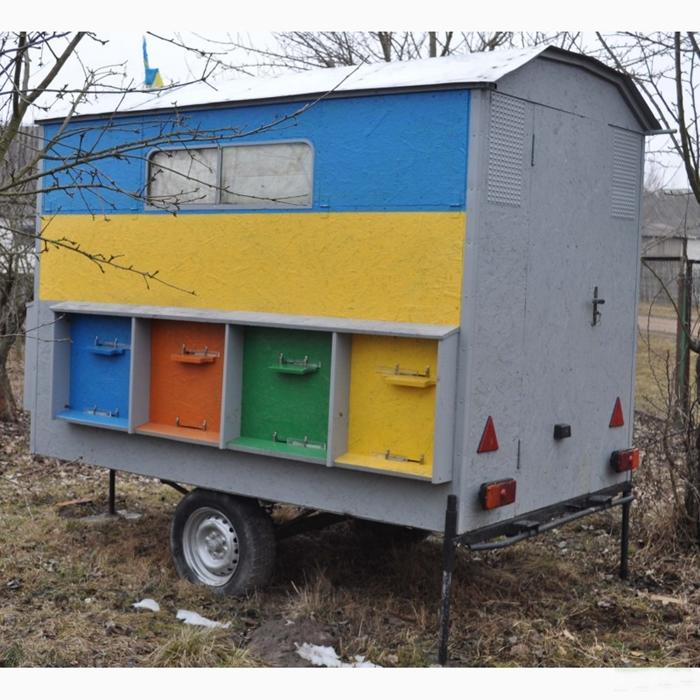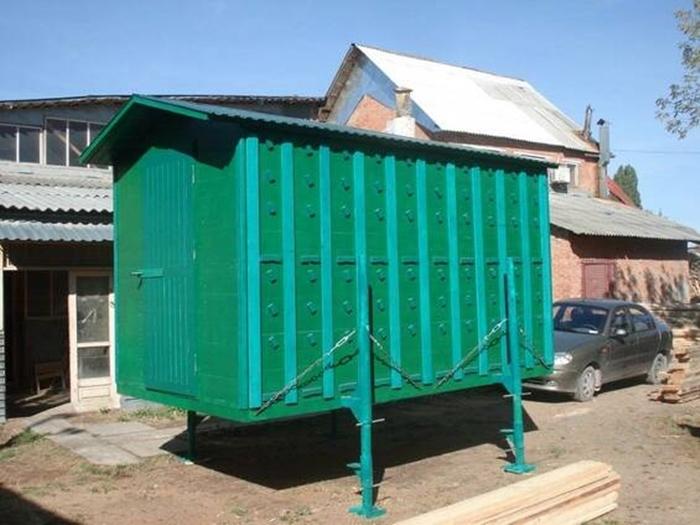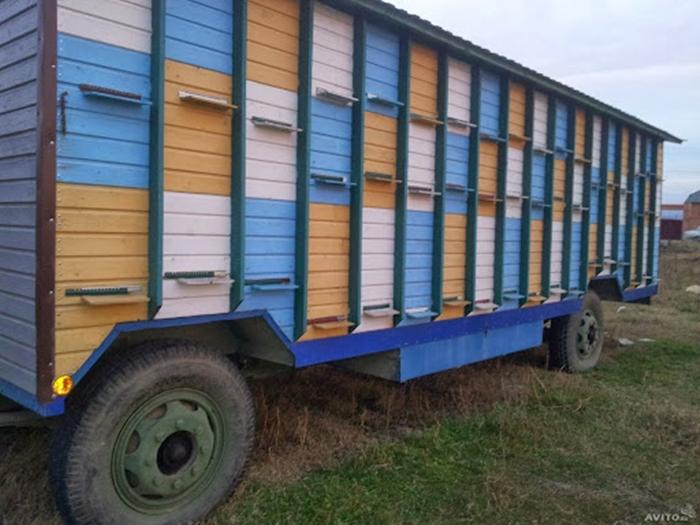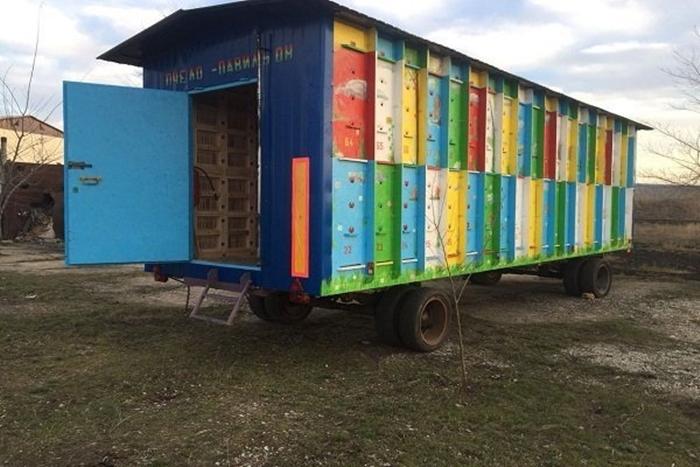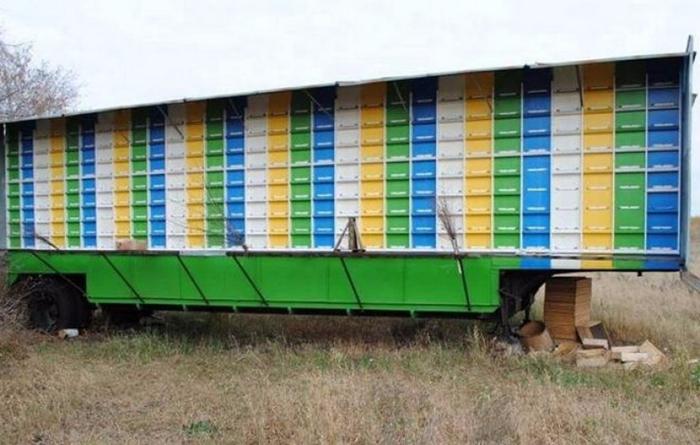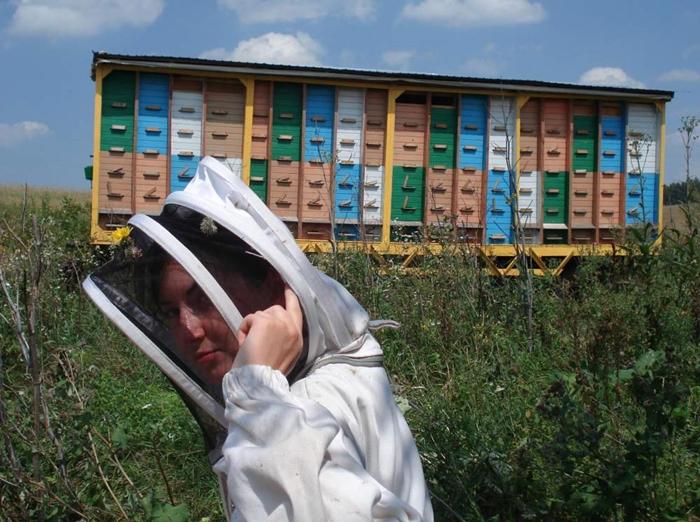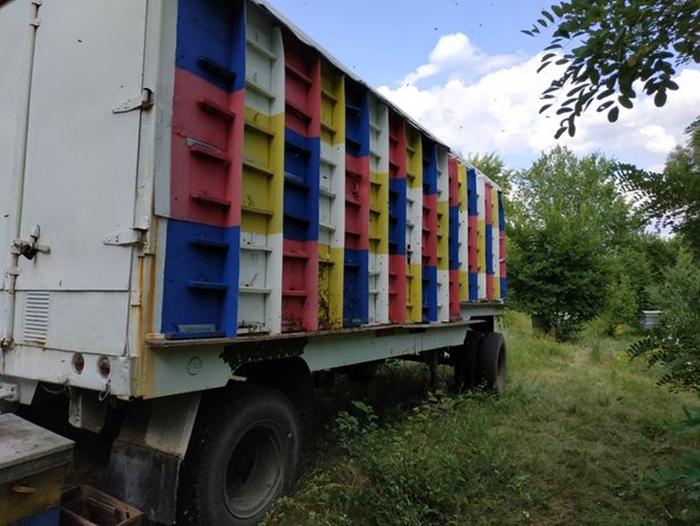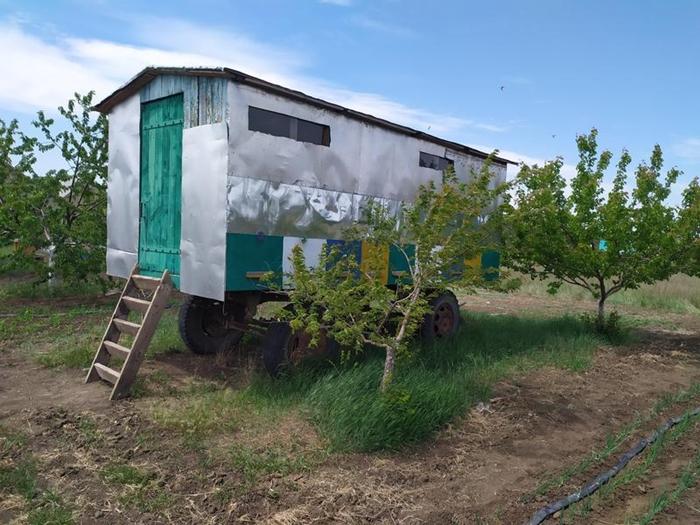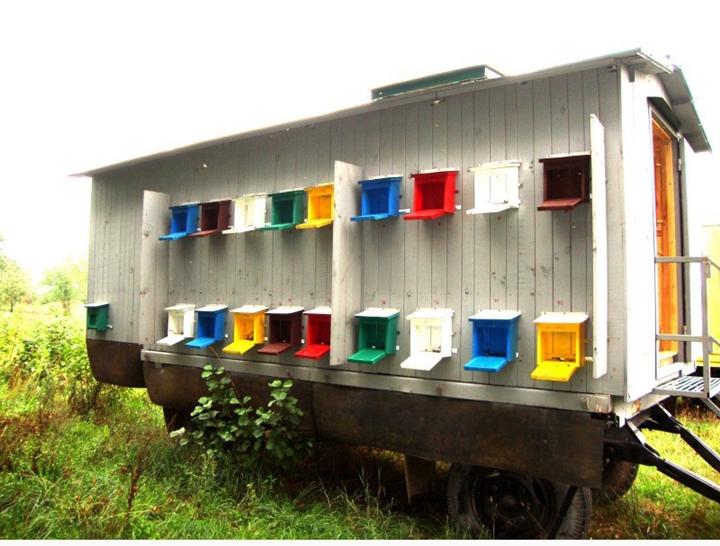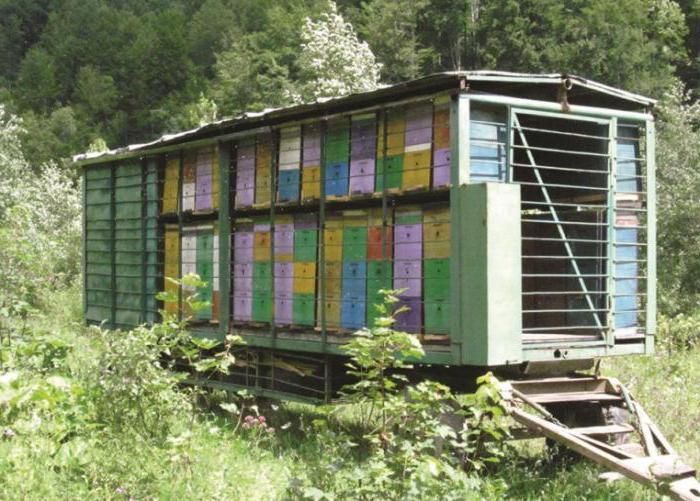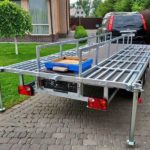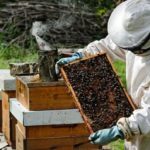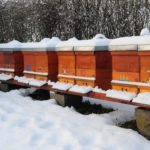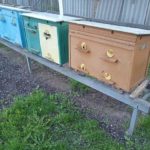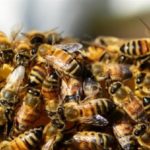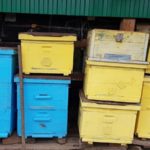A type of ordinary apiary is hives located in a row on a plot of land. But there are also non-standard installation methods - pavilions for bees. Let's consider what it is, what types exist, the advantages and disadvantages of the designs. How to make a pavilion with your own hands, what materials and tools will be needed. How to keep bees in such structures.
Types of pavilions for bees
A pavilion is a lightweight building or mobile structure that is erected to save apiary space. It holds 10-40 standard hives.
Stationary
It remains in one place and cannot be transported. The base of the structure is made of steel, the hives are made of plywood. In such a building there is a room for the beekeeper, where he can store equipment.
Permanent pavilions are similar to a summer house, but are built on a cast or columnar foundation. You can easily install light and even water into it and insulate it. Even in a building without heating, bees are not cold in winter if the building is oriented with a long wall to the southwest or southeast.
Cassette
It can accommodate up to 46 families. Hives are like cabinets with drawers that slide out. The cassette type is convenient because the hives are easy to maintain without disturbing other bees. The structure can be either mobile or stationary. It is popular due to its versatility and convenience.
Mobile
It is usually built on a trailer. Because of this, the pavilion can be transported anywhere any day. It also contains a room for the beekeeper and a compartment for the hives.
Advantages and disadvantages
Advantages of pavilions for bees:
- saving space on the site;
- facilitating the beekeeper's work;
- easier to feed the family;
- It’s easier to maintain the optimal temperature inside;
- can work in any weather;
- it’s easier to align families;
- easy to transport all hives at once;
- easy to maintain;
- You can winterize bees on site.
The Bee Pavilion is not without its drawbacks. This is the need to work in the dark and the fact that due to the close proximity of the hives, insects can confuse families.
Drawings and dimensions
The size of the structure for bee colonies may vary. Depends on the number of hives.But it is also necessary to ensure that the design also includes a living area. When calculating, you need to take into account the width of the trailer and the size of the fasteners. On average, a pavilion for 20 families is optimal for a home apiary.
When creating the dimensions of the structure, you need to take into account that the ceiling should be the height of a person, the width of the passage should be 0.8 m. This is necessary to move freely and work with frames.
Tools and materials
To build a pavilion, you need to prepare a welding machine, a jack, a hammer, and a saw. You will also need door and window hinges, nails, screws, and fastening materials. What materials to take: boards, plywood sheets, chipboard, wood or metal beams for the frame. For the roof you need to purchase sheet iron or roofing felt, polystyrene foam for insulation, and paint for painting the walls.
To measure the accuracy of the location of parts of the structure horizontally and vertically, you need to purchase a level and tape measure.
DIY making
Building a pavilion is, of course, not easy. You will need to spend many hours preparing and assembling the pieces into one whole.
Build process
First you need to make a frame, for which you weld metal parts and weld them one by one on the platform. Then make the sheathing and roof, install the door, and equip the beekeeper’s room with everything necessary.
Afterwards, install compartments and feeders into the finished building. Usually hives are placed under both sides of the building. Feeders can be external or internal. The latter are divided into 3 types:
- ceiling - boxes in which you can put food without opening the hives, also suitable for winter feeding;
- frame ones are similar to a frame, installed near the nests, recommended for use in the fall;
- plastic ceiling, characterized by a high level of functionality.
Can be made from bottles that are placed at the bottom of hives, disposable. External feeders can be general or mounted, which are attached to the summerhouse. To feed the bees, you don't have to open the bees. A drawback has been noticed in external feeders - strangers can feed in them.
Lighting
To make work more convenient and comfortable, lighting is installed inside the room. The lamps will operate from the nearest power line. You can use regular lamps or fluorescent lamps, or better yet, combine both types. Incandescent lamps must be protected by shades.
Insulation
Insulation will help the bees feel more comfortable and will maintain the temperature inside the room without significant changes. As an insulating material, roofing felt or mineral wool is used, which is placed between plywood sheets. The cracks and joints should be covered with thick film.
If winters are frosty, then such insulation may not be enough. It is necessary to make electric heating with automatic switching on, capable of maintaining the temperature at a given level. The system will turn on when the temperature drops below the set point. Automatic switching on and off will save money on electricity bills and protect the bees from getting cold in the cold.
Ventilation
In order for the pavilion to be ventilated correctly and enough air to flow into it, it is necessary to install fresh ventilation. After all, the air that comes naturally may not be enough.Supply ventilation is installed simply: install a pipe with a mesh on one wall of the building, and take the same piece of pipe outside opposite it. There the pipe should rise 1.2 m above the roof. For ventilation, you can make exhaust hatches in the ceiling.
Installation
When the pavilion is assembled, you need to equip a utility room. In mobile versions, the rooms are usually located at the back and are end-to-end to allow passage from them to the hives. In stationary rooms, the room is located on the side. They store equipment, feed, tools, and a small honey extractor.
Content Tips
The main thing when keeping bees in a pavilion is to prevent swarming in a timely manner. To do this, bees must constantly work. Every year, up to 80% of the queens need to be replaced with young ones. You will have to ensure that the temperature is almost constant, which is achieved by ventilation and heating.
To reduce the aggressiveness of bees, the interior walls of the house should be painted white. From the street, each hive should be painted in different colors, which will make it easier for insects to find their hive.
A bee pavilion solves many problems for a beekeeper. There is no need to collect the hives separately and transport them in a trailer. It is easier to care for a compact apiary, since everything is in one place, and, as practice has shown, bees produce more honey than with standard maintenance.


